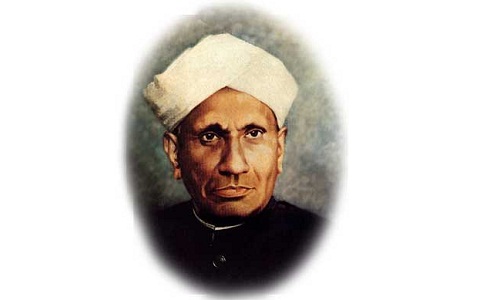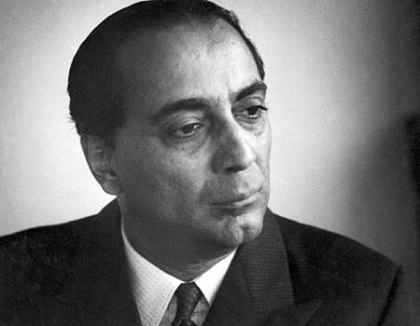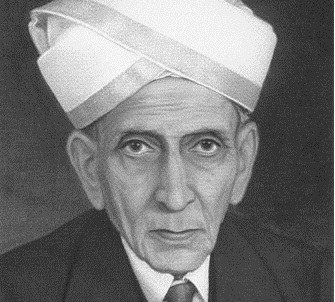Wednesday, 14 October 2015
Monday, 12 October 2015
online assaignment
ASSIGNMENT
eTWINNING FOR
PROFESSIONAL GROWTH IN LEARNING OF PHYSICAL SCIENCE
Submitted to, submitted
by, DEEPTHY. C SANDHYA ASHOKAN
Submitted
on, PHYSICAL
SCIENCE 03.10.2015
REG.NO:18214379017 SABARIGIRI
COLLEGE OF EDUCATION,
ANCHAL
|
Sl.No
|
Content
|
Page No.
|
|
1.
2.
3.
4
5.
6.
7.
8.
|
Introduction
eTwinning
History
Operation
The
Role Of ICT And eTwinning
Collaboration And eTwinning
Conclusion
Reference
|
4
5
5
5
6
7
7
8
|
INTRODUCTION
Internet enables people to learn in a network without
meeting in physical environments. Blogs, Wikis, Twitter messages and other Web
2.0 media forms bring learners many new learning experiences. Learning networks
make it possible for learners to learn together and to show their achievements.
Certain monitoring tools are required to monitor the learning activities.
However, it is challenging to measure the performance of learning or to tell
who make better progresses in learning some soft skills.
eTwinning is a professional
development network for European school teachers and has been aimed to promote
European teachers' collaboration through the use of Information and
Communication Technologies (ICT). In order to recognize teachers' performance
in project cooperation, additional values such as "Quality Label" and
"European eTwinning Prizes" are applied to assess teachers' achievements
within eTwinning. That additional information may help teachers and management
staffs learn about teachers' learning performance or professional development
path.
eTWINNING
The
eTwinning action is an initiative of the European Commission that aims to
encourage European schools to collaborate using Information and Communication
Technologies (ICT) by providing the necessary infrastructure. Therefore,
teachers registered in the eTwinning action are enabled to form partnerships
and develop collaborative, pedagogical school projects in any subject area with
the sole requirements to employ ICT to develop their project and collaborate
with teachers from other European countries .The primary workspace for the
eTwinningaction, is the eTwinning Portal and it is available in 25 languages.
Teachers registered in the eTwinning action, also called eTwinners. This
growing and active community enforced the change in the motto of eTwinning from
"School partnerships in Europe" to "The community for schools in
Europe".
HISTORY
The eTwinning action was launched in January 2005. Its main
objectives complied with the decision by the Barcelona European Council in
March 2002 to promote school twinning as an opportunity for all students to
learn and practice ICT skills and to promote awareness of the multicultural
European model of society. More than 13 000 schools were involved in eTwinning
within its first year. In early 2009 the eTwinning motto has changed from
"School partnerships in Europe" to "The community for schools in
Europe". Currently in June 2012, more than 20 000 projects have been
developed between two or more schools across Europe, the total number of
registered teachers is close to 170 000 and the number of involved schools is
more than 90 000.
OPERATION
The main concept behind eTwinning is that schools are paired
with another school elsewhere in the Europe and they collaboratively develop a
project, also known as eTwinning project. eTwinning encourages and develops ICT
skills as the main activities inherently use information technology. Being
'twinned' with a foreign school also encourages cross-cultural exchanges of
knowledge, fosters students' intercultural awareness, and improves their
communication skills.
eTwinning projects
last for any length of time ranging from only a week, to months, up to creating
permanent relationships between schools. In contrast with other European
programmes, such as the Comenius programme, all communication is held via the
internet and therefore there is no need for grants. Along the same lines,
face-to-face meetings between partners schools are not required, though they
are not prohibited and some schools organise face-to-face meetings. European
schoolnet has been granted the role of Central Support Service (CSS) at
European level. eTwinning is also supported by a network of National Support
Services (NSS).
The aim is
for eTwinners to share practice examples, discuss teaching and learning
methodologies and find support for professional development.
COLLABORATION AND eTWINNING
School organization Collaboration can
take place on several levels:'
• Collaboration
between schools
• Schools may have
steering committees for monitoring school development measures, among which
collaborative working is one method of working.
• Collaboration between teachers
• Exchanges may take place informally, in pedagogical
conversations, in lesson or class conferences, during congresses and regional
meetings
• Involvement of the social and economical community around
the school.
• In order to allow collaborative learning in the classroom
and to be able to moderate this process when necessary, it is fundamental that
teachers themselves are well-trained and experienced in collaborative learning.
Therefore, communication training (e. g. feedback rules) may be useful to help
them to start thinking about their behaviour and communication processes and to
deepen their confidence in this way of working.
• Team building methods may be carried out by intensive
collaborative working days where the school manager and all teachers meet and
exchange experiences on pedagogical questions, processes, the use of multimedia
as well as basic competencies.
• Changes individual attitudes and behaviours by
communicating, respecting and also adapting;
•It is an advantage
for the individual learning process: common help and several ideas lead to
increased output;
•It has positive social effects by an unproved communication:
helps for building teams and to get to know each other better;
•It is important for living and working outside the school,
i. e. for the future profession;
•It needs rules in order to function;
•It is more fun than working alone.
THE
ROLE OF ICT AND eTWINNING
ICT has been heralded as a tool that will change the face of
society, not only educationally but also socially. Education has been caught up
in this maelstrom of change with much debate about the positive and negative
impact of ICT on the role of the teacher, the learning style of students and
the institution of school itself. The integration of ICT into teaching and
learning activities has been slowly formulating over many years from the use of
tape recorders and language laboratories in language teaching, to the use of
television and video material in all subject areas. The last twenty years has
witnessed the invasion of computerized technology into all aspects of our
lives, from banking to shopping and of course, education. This has led to the
notion of Lifelong Learning, where the formal education process is no longer
viewed as something that happens only within the solid walls of formal
educational institutions. New models of learning environments are emerging:
community based learning centres; home based digital TV screen; public
information kiosks; WAP mobile information services; wireless education
delivered through high speed cable connection to an interactive environment
which permit the use of portable devices literally anywhere. These together
with the phenomenal growth of the Internet means that teaching and learning
tasks are being broadened in ways unimagined twenty, ten or even five years
ago. The use of new technology is now seen as a means of encouraging a more
personal style of learning in which the student is actively involved in seeking
out knowledge and the answers to specific problems.
ICT-use One of the main objectives
for eTwinning is to promote the use of modern information and communication
technologies (ICT) in education. By using email, web-pages, blogs and vlogs,
videoconferencing and internet, etc, the students’ and teachers’ ICT skills
will be developed and used in a relevant and natural way. So far, European collaborative
projects have been carried out by some schools by visiting each other, writing
letters and sending photographs. ICT provides an inexhaustible variety of ways
to structures and perform a collaborative project with professional and
rewarding results that speed up letter writing and the sending of photographs
and make face to face visits more rewarding and worthwhile by the ease with
which the visit can be planned and extending the contact afterward easily.
CONCLUSION
Collaboration is a key issue in
nowadays education. It is important that schools recognize the value of
collaboration between teachers inside the school and between teachers of
different schools. Engaging in this collaboration between teachers can reflect the
potential for possible collaborative work between pupils and schools. ICT is
viewed by many as a tool or set of tools that enable communication, but it is
argued that ICT is more than just a tool. It is a means of interaction and
communication that has never been possible up to this point, in that it enables
interaction, construction of knowledge, collaboration and social activity in a
way never conceived before. The challenge for independent learning and
motivation are increased: ICT makes lessons more vivid and motivates pupils
through experimental and active learning. eTwinning can contribute to all of
this and provide a ready-made audience for collaboration by means of ICT and
ICT tools
REFERENCE
1. Bassey, M. (1999).Case Study
Research in Educational Settings. Berkshire:
Open University Press. Balanskat, A.,
Blamire, R. &Kefala, S. (2006). The ICT Impact Report: A review of studies
of ICT impact on schools in Europe.
2. Brussels: European Schoolnet.
Retrieved from http://insight.eun.org/shared/data/pdf/impact_study.pdf
3. Central Support Service for eTwinning (2006). Learning
with eTwinning. Brussels: European Schoolnet.
4.Drent, M.
&Meelissen, M. (2008). Which factors obstruct or stimulate teacher
educators to use ICT innovatively? Computers & Education, 51, 187-199.
Chemistry Jokes
Two atoms are walking down the street.
Says one atom to the other, "Hey! I think I lost an
electron!"
The other says, "Are you sure??"
"Yes, I'm positive!"
If you're not part of the
solution, you're part of the precipitate!
A neutron walks into a
restaurant and orders a couple of cokes. As she is about to leave, she
asks the waiter how much she owes. The waiter replies, "For
you, No Charge!!!"
A sign outside the chemistry
hotel reads "Great Day Rates, Even Better NO3-'s"
Sometimes people can get
carried away with a danger that isn't real! A group is working
hard to ban the "potentially dangerous" chemical, dihydrogen
monoxide (water) - check out the
research on this subject.
A small
piece of ice which lived in a test tube fell in love with a Bunsen burner.
"Bunsen! my flame! I melt whenever I see you" said the ice. The Bunsen
burner replied :"It's just a phase you're going through".
Heisenberg
is out for a drive when he's stopped by a traffic cop. The cop says: " Do
you know how fast you were going? Heisenberg replies: "No, but I know
where I am".
Why did the
white bear dissolve in water? Because it was polar.
What do you
call a tooth in a glass of water? A one molar solution.
What
do dipoles say in passing? "Have you got a moment?"
Why does
hamburger have lower energy than steak? Because it's in the
ground state.
What do you
do with a dead chemists? Barium
What weapon
can you make from the elements potassium, nickel and iron? A KNiFe.
What did one
titration tell the other? Let's meet at the endpoint.
Why are
chemists great for solving problems? They have all the
solutions.
Did you hear
about the chemist who was reading a book about Helium? He
just couldn't put it down.
Why do
chemistry professors like to teach about ammonia? Because it's basic
material.
What is a
cation afraid of? A dogion.
What did the
Cowboy Chemist tell his horse? HIO Ag!!!!
How many
moles are in a guacamole? Avocado's number.
Why did
Carbon marry Hydrogen? They bonded well from the minute they met.
What kind of
ghosts haunt chemistry faculties? Methylated spirits.
If H20
is water what is H204? Drinking, bathing,
washing, swimming. . .
What's the difference between Chemistry and cooking? In Chemistry, you should never lick the spoon.
A group of organic molecules were having a party, when a group of robbers broke into the room and stole all of the guest's joules. A tall, strong man, armed with a machine gun came into the room and killed the robbers one by one. The guests were very grateful to this man, and they wanted to know who he was. He replied: My name is BOND, Covalent Bond.
A freshman chemistry student prepared a standard solution and showed it to her professor. The professor gave her a puzzled look, and said: This solution looks a bit WEIRD. Are you sure you used the right set of reagents? The student replied: Absolutely. According to my calculations, this is one NORMAL solution.
Friday, 9 October 2015
Top 10 Indian scientists and their contributions:
1. C V Raman

The great Indian physicist, Dr
Chandrasekhar Venkata Raman will never be forgotten for his research in
the field of physics, which turned out to be a momentous contribution to
the world. The discovery of Raman Effect earned him the prestigious
Bharat Ratna Award, in addition to Nobel Prize in Physics in 1930.
Some other Indian scientists who will
always be remembered for their glorious contributions in the field of
science and technology are Salim Ali, Harish Chandra, G N Ramachandran
and Dr Shanti Swaroop Bhatnagar.
2. Homi J Bhabha

Featuring next on this list is the
leading atomic scientist, Homi J Bhabha, who was instrumental in the
scientific progress of the country by setting up institutes like Bhabha
Atomic Research Institute and Tata Institute of Fundamental Research.
This great physicist was also the first man to hold the position of the
Chairman of the Atomic Energy Commission.
3. M Visvesvaraya

One of the greatest scientists and
engineers of India was M Visvesvaraya, who has played a key role in the
building of Krishnarajasagar Dam and introduced the technology of steel
doors to prevent wastage of water in dams. His contribution in the field
of architecture of modern India fetched him the Bharat Ratna in 1918.
4. APJ Abdul Kalam

APJ Abdul Kalam, also known as the
Missile Man of India, is a great visionary and scientist from India, who
has also served as the President of the country from 2007 to 2011. He
has been noted for his contribution in the field of vehicle technology
and ballistic missile.
5. Srinivasa Ramanujan

The next name to feature on the list of
top 10 Indian scientists is that of Srinivasa Ramanujan, known as the
greatest mathematician of the 20th century. His contribution
in the field of mathematics and geometry has been immense, with research
on elliptic function, continued fractions, infinite series and
analytical theory of numbers.
6. Dr Raja Ramanna

Dr Raja Ramanna was an outstanding
physicist and nuclear scientist, who had worked in close co ordination
with Dr Homi Bhabha. He was a multi faceted personality, who was also a
scholar, musician and philosophy researcher.
7. Dr Yellapragada Subba Rao

Next on this list comes the name of the
famous biochemist called Dr Yellapragada Subba Rao, who has been
credited with the discovery of a number of life saving antibiotics. An
anti cancer drug manufactured by him many decades ago continues to be
used globally for treating the deadly disease.
8. Satyendra Nath Bose

Another well known Indian physic was
Satyenra Nath Bose, whose “Bose-Einstein Theory” earned him worldwide
fame. He has played an instrumental role in the field of quantum physics
and an atomic particle called Boson has been named after him.
9. Subrahmanyan Chandrasekhar

Next among the top 10 Indian scientists
is Subrahmanyam Chandrasekhar, who was commended with the Nobel Prize in
Physics in 1983. One of the greatest physicists of the 20th
century, Chandrasekhar has made contributions in the fields of
astrophysics and mathematics. One of his most well known works is the
Chandrasekhar limit, which deals with Brownian Motion and theory of
illumination.
10. Har Gobind Khorana

An Indian American scientist, Har Gobind
Khorana was a leading bio chemist, who was honored with the prestigious
Nobel Prize in 1968 for his useful research work on synthesis of
proteins and interpretation of genetic code.
A. P. J. Abdul Kalam- The real Indian The real Teacher
A. P. J. Abdul Kalam
Former President of India
 .
.
Born: October 15, 1931, Rameswaram
Died: July 27, 2015, Shillong
Full name: Avul Pakir Jainulabdeen Abdul Kalam
Parents: Ashiamma Jainulabiddin, Jainulabiddin Marakayar
Avul Pakir Jainulabdeen "A. P. J." Abdul Kalam was the 11th President of India from 2002 to 2007. A career scientist turned reluctant politician, Kalam was born and raised in Rameswaram, Tamil Nadu, and studied physics and aerospace engineering
10 quotes by the scientist, author and former President:
- You have to dream before your dreams can come true.
- Excellence is a continuous process and not an accident.
- Life is a difficult game. You can win it only by retaining your birthright to be a person.
- Man needs his difficulties because they are necessary to enjoy success.
- We will be remembered only if we give to our younger generation a prosperous and safe India, resulting out of economic prosperity coupled with civilizational heritage.
- Those who cannot work with their hearts achieve but a hollow, half-hearted success that breeds bitterness all around.
- Educationists should build the capacities of the spirit of inquiry, creativity, entrepreneurial and moral leadership among students and become their role model.
- Look at the sky. We are not alone. The whole universe is friendly to us and conspires only to give the best to those who dream and work.
- If a country is to be corruption free and become a nation of beautiful minds, I strongly feel there are three key societal members who can make a difference. They are the father, the mother and the teacher.
- My message, especially to young people is to have courage to think differently, courage to invent, to travel the unexplored path, courage to discover the impossible and to conquer the problems and succeed. These are great qualities that they must work towards. This is my message to the young people.
Subscribe to:
Posts (Atom)





























